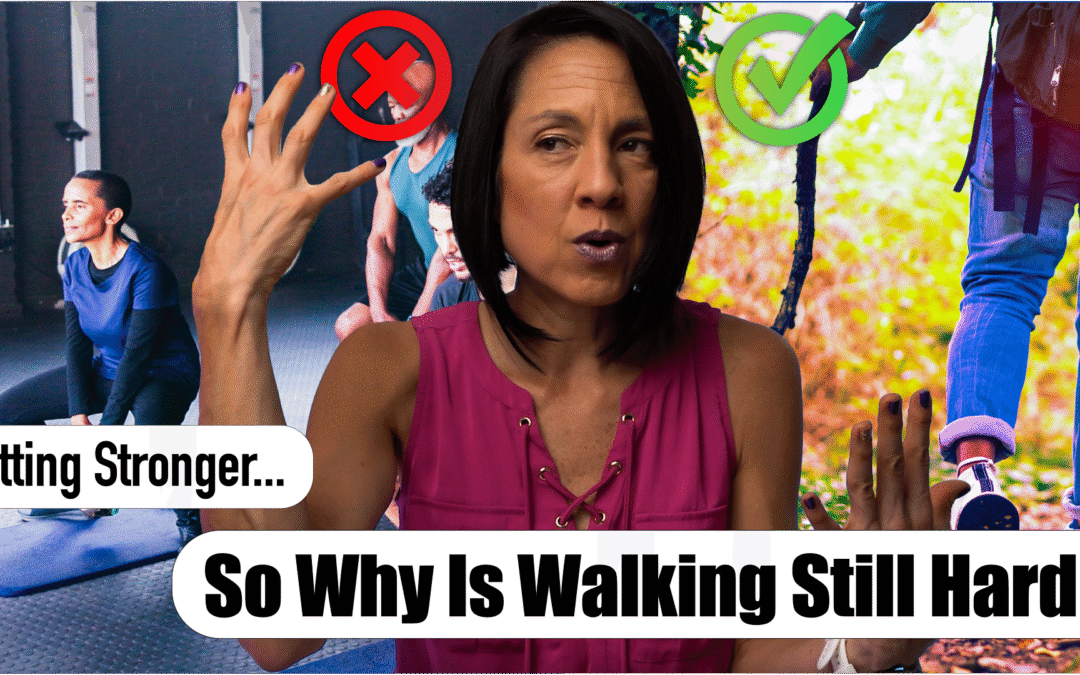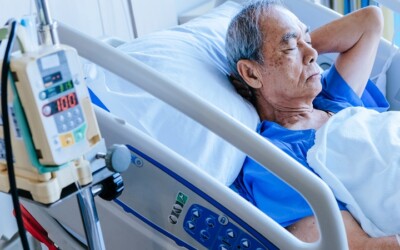Stroke Recovery Tips: When Exercises Don’t Seem to Work
Is it possible to be making progress after a stroke or neurologic injury and still feel like your movement is getting stiffer, heavier or just plain harder?
Absolutely. And let me tell you, it is one of the most frustrating things I see in recovery.
So why does this happen? Why can you be “getting stronger” but feel like your movement quality is getting worse? And more importantly, how do you measure progress in a way that actually helps you get better?
Strength vs. Motor Control – They’re Not the Same Thing
A common frustration I hear:
“I feel stronger, but my walking feels heavier.”
“Some days my leg won’t move at all.”
“I fatigue so quickly, even though I know I’m improving.”
This all comes down to understanding the difference between strength and motor control.
When you’ve had a stroke, it’s not that your muscles are simply “weak.” The problem is that the operating system, your brain’s code that controls movement has been damaged.
Think of your brain like a computer. Your muscles are the keyboard and they still work. But the hard drive that runs the programs? That’s where the damage is. When a stroke wipes out part of the “code,” your muscles can’t execute normal movement patterns anymore.
So what do most people do? They fall back on what they know: strengthen, strengthen, strengthen. But strengthening alone often reinforces abnormal movement patterns (like spasticity or those stiff, locked movements). And the more you push into those, the more your brain rewires around them. We call that negative neuroplasticity.
So What Can You Do?
Focus on Motor Control
Here are some strategies I use with my patients to turn all that effort into quality movement that feels better and translates into daily life.
1. Sensory Input Matters
Things like tapping, rubbing, vibration, or even just moving the arm or leg passively, these all remind your brain: “Hey, there’s a limb here, pay attention!”
It’s like reintroducing your brain to your body again.
2. Prioritize Quality Over Quantity
Don’t just celebrate movement for movement’s sake. Watch how it’s moving.
If your arm rotates in oddly when you lift it or your hand closes with your thumb tucked, stop and adjust. Reinforcing abnormal patterns makes them harder to break later.
3. Break Skills Down
Walking is a perfect example. Instead of endless squats and lunges, focus on the exact part of walking that’s giving you trouble.
- Practice weight-bearing without locking your knee.
- Practice swinging the leg without relying on abnormal patterns.
- Practice lifting your ankle with your knee straight.
This helps rebuild control, not just strength.
But Also… Don’t Forget to Just Walk
Sometimes, the best thing you can do is the obvious: walk more.
I see so many people get caught up in finding the “perfect exercise” when what they really need is more time on their feet.
Just like toddlers, they don’t get drills, they just keep practicing until it clicks.
The Big Takeaway
Feeling like your movement is “worse” while you’re working hard can actually be a sign that your brain is still figuring things out. The key is shifting your focus from strength alone to motor control, and making sure the movements you’re practicing are high-quality and moving you closer to normal function.
And if you want more structure and guidance on how to do this in your own recovery, that’s exactly what we’ve built inside our Rehab HQ membership program. You get access to tools, exercises, and step-by-step guidance so you can take full ownership of your rehab, on your own terms.
You can learn more or sign up here.
I hope this helps connect some dots for you.
Remember: Progress isn’t always a straight line, and sometimes “worse” movement is just part of the path to better.
Articles you may be interested in
Why Plyometrics Matter After Stroke (Even if They Sound Scary)
Why Plyometrics Matter After Stroke (Even if They Sound Scary) Let’s start with the obvious: The word "plyometrics" sounds like something reserved for athletes, not stroke survivors.But stay with me—because if you’re in the later stages of recovery, this could be the...
Stages of Motor Learning Post Stroke
Why Everything Feels So Hard (and What That Actually Means for Your Recovery) If you have ever said: “Why is this so hard?” “I could do this yesterday—why not today?” “Why can’t I remember how to move?” You are not alone. If you’ve had a stroke and you're in rehab,...
Blocked, Random, or Distributed? How to Choose the Right Practice Schedule in Stroke Recovery
Blocked, Random, or Distributed? How to Choose the Right Practice Schedule in Stroke Recovery Let’s talk about one of the most overlooked pieces of stroke recovery: How you practice. Not what…Not how long…But how the practice is structured. Because believe it or not,...
You have just had a stroke. Now what?
You’ve Just Had a Stroke. Now What? Acute Phase Recovery Guide – What to Expect in the First Few Days First Things First… If you’re here, you or someone you love has likely just had a stroke. Let’s pause for a moment and say what most people won’t: This is...
Gravity Matters: How to Use It (or Remove It) in Stroke Recovery
Gravity Matters: How to Use It (or Remove It) in Stroke Recovery When I say "use gravity to your advantage"… what I really mean is: be strategic. One of the biggest mistakes I see in rehab (especially home programs) is doing exercises that are technically correct—but...
Use Synergy Patterns Sparingly (and Here’s Why That Matters)
Let’s talk about something that shows up in nearly every stroke recovery journey: synergy patterns. You might not know them by name. But if you’ve ever noticed your arm “wants” to move in one big sweeping motion (instead of just lifting your hand)… or if your leg...
Best Arm Rehab Post Stroke
Discover how new research is changing what’s possible for stroke survivors with little to no arm movement. https://youtu.be/Bw-rd1Fx02cWhat if I told you that even if you can’t move your arm after a stroke, there are still powerful ways to promote recovery—and...
Food Is Fuel—and Medicine: Why Nutrition Shapes Your Recovery
What you eat might be the most powerful rehab tool you're not using. Nutrition isn’t just about weight or willpower. It’s not about which diet is trending this year. And it’s definitely not about perfection. It’s about function. And when your brain is trying to heal,...
Stroke Recovery Essentials: 4 Non Negotiables For Brain Healing
We talk a lot about exercises in stroke recovery. But here’s the truth: recovery doesn’t start with movement—it starts with oxygen. When a stroke cuts off blood flow, your brain enters a chemical storm. Inflammation surges. Oxidative stress damages neurons. The...
When Your Brain Forgets Half the World: Understanding Hemispatial Neglect
When Your Brain Forgets Half the World A practical guide to hemispatial neglect after stroke Let’s talk about something that doesn’t get nearly enough attention—literally. It’s called hemispatial neglect.And if you’re dealing with it, you already know how frustrating,...














